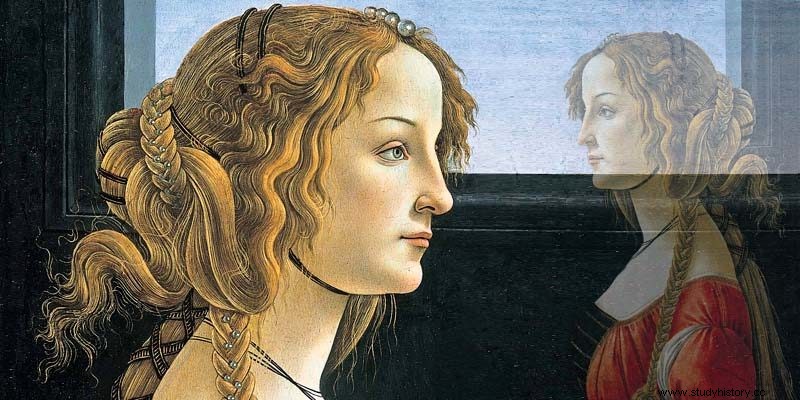The Vatican, a place of worship and pilgrimage, has always been a world of men, but throughout history four women have managed to gain a foothold in it. The queens Charlotte of Cyprus and Cristina from Sweden, the Polish princess Maria Clementina Sobieska , and the protagonist of our story, Matilde de Canossa , are the only four women buried in the Vatican.
What merits did Matilde do to be worthy of this privilege? -if it can be considered a privilege-.

Matilde or Matilda was born in Mantua (Italy) in 1046. She was the daughter of Boniface III, one of the richest and most powerful nobles in Italy who owned several castles and controlled large territories in Lombardy, Emilia and on both sides of the Apennines, the most important due to its strategic position. When her father died -other versions say that he was murdered-, she was just a girl and her mother, Beatriz de Lotharingia, to secure the family possessions and her son's inheritance, Federico married Godofredo the Bearded , staunch enemy of Emperor Henry III. The family was a fervent follower of the precepts of the Church and the letters that mother and daughter exchanged with Pope Gregory VII they were very affectionate -in the style of hanging you, don't hang you, both come at the same time...-. A series of family misfortunes (the death of her mother, her stepfather and her brother Federico) led Matilda to take charge of the family businesses and, just as her mother had done, she, she also got married. Also, with someone very close:Godofredo the Hunchback , son of her stepfather Godofredo the Bearded . That marriage of convenience soon broke down, and Matilda left her husband and returned to the castle of Canossa.
The territories that separated the Papal States and the Holy Germanic Empire, controlled by Matilda, were of special importance in the confrontation between Gregory VII and the new emperor Henry IV, and Matilda, as expected, sided with the Pope. Taking advantage of the fact that that marriage had ended like the rosary at dawn, Enrique IV made a move on her:she won the friendship of her abandoned husband, Godofredo the Hunchback , and summoned the Synod of Worms (1076). The 26 German bishops gathered there, under the supervision of the emperor, decided to dismiss Gregory VII for having sexual relations with Matilda. The Pope was not aware of it and excommunicated the bishops and the emperor –Godofredo had a worse fate, he was found dead in strange circumstances-. The emperor understood that he had gone too far and regretted losing the favor of the vicar of God. He went to the castle of Canossa, where Matilda and the Pope were waiting for him, to ask for forgiveness…

Henry IV had to stay three days and three nights at the gates of the castle, snowing, dressed like a monk in a woolen robe and barefoot until he got papal pardon. The peace did not last long, because years later Henry IV entered Rome and deposed Gregorio who, with great luck, managed to take refuge in the Castel Sant'Angelo. He named Clement III Pope and made a mistake:leaving Rome with Matilda free. She, with her mighty army, defeated the emperor's forces and put Gregory back on the throne of St. Peter. Upon the death of his friend in 1085 -some would say lover-, she continued to support the legitimate Popes (Victor III and Urban II) with his army and fighting against the hosts of the emperor and the corresponding antipopes appointed by him.
And if this were not enough to be buried in the Vatican, with Gregory VII still alive and well, he made a will: all her possessions, which were not few or insignificant, would pass into the hands of the Church when she died . For several years the emperors and the Church maintained disputes over these possessions and the validity of that will, until in 1213 Emperor Frederick II recognized the right of the Church over Matilda's possessions. Matilda passed away in 1115 and in 1645 her remains were moved and entombed in St. Peter's Basilica in a sumptuous tomb sculpted by Bernini.

